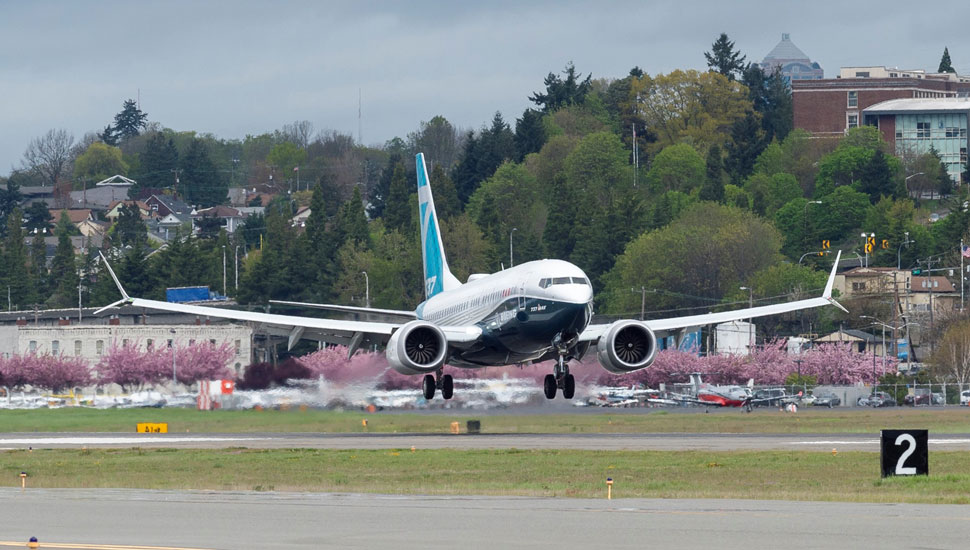Lawmakers grilled the head of the Federal Aviation Administration on 15 May, hammering acting administrator Dan Elwell with questions about the FAA’s certification and oversight of both Boeing and the troubled 737 Max.
Elwell sat before a House Transportation Committee panel for hours, during which he expressed confidence in the FAA’s certification work.
But he conceded pilots should have known more about the 737 Max’s manoeuvring characteristics augmentation system (MCAS), the flight control software implicated as a factor in two 737 Max crashes.
“When I first heard of this, I thought that the MCAS should have been more adequately explained… in the manual,” Elwell tells lawmakers. “There should have been more text in the manual about MCAS.”
His comments hinged repeatedly on concepts like “safety-critical systems” and “single points” of failure.
Was the 737 Max’s MCAS safety critical, one lawmaker asked.
“It seems to me that, yes, it is,” Elwell replied.
Why, then, did the FAA approve a system that can cause the aircraft to dive based on one faulty angle-of-attack (AOA) indicator?
Elwell responded that pilots can counter MCAS by using a checklist they should have in memory.

Boeing
MULTIPLE INVESTIGATIONS
The hearing came two months into the 737 Max grounding and amid several high-level related investigations, including congressional reviews and a certification investigation by US Department of Transportation's Office of Inspector General.
The FAA also established a Joint Authorities Technical Review” (JATR) panel to study the 737 Max’s flight control system and a Technical Advisory Board (TAB) to examine Boeing’s MCAS software fix.
The JATR panel, composed of representatives from foreign civil aviation administrations, will meet on 23 May.
Meanwhile, the FAA has reviewed an initial version of Boeing’s 737 Max software fix, but has not received the final version.
“We are expecting the application of the formal MCAS software update soon,” Elwell says. “The 737 Max will return to service only when the FAA’s analysis… indicates that it is safe to do so.”
Boeing has said the update will make MCAS rely on two AOA indicators and prevent the type of rapid stabiliser movement that occurred in the final minutes of two crashes of the 737 Max operated by Lion Air and Ethiopian Airlines.
Elwell also fielded questions about the FAA’s “organisation designation authorisation” (ODA) – a regime under which it grants companies and their staff authority to perform oversight of some aspects of certification.
Elwell says the ODA system evolved over decades as an effective means of regulation.
“If we have robust oversight and all the protections in place to guard against conflicts of interest or undue pressure, which I think we have… it’s a good system,” he says. “To be granted an ODA is a privilege that a company earns.”
Lawmakers also raised concerns over why a year elapsed before the FAA learned Boeing delivered 737 Max to airlines with non-working AOA indicators.
“I’m concerned that it took a year, and we are looking into that,” Elwell says. “It shouldn’t take a year.”
But AOA sensors are not safety critical; rather, they primarily help mechanics identify issues, says the FAA’s head of certification Earl Lawrence, who also appeared before the committee.
“Don’t make something that isn’t a critical safety item a critical safety item,” Elwell says.
The hearing also served as a forum for lawmakers to opine on both sides of the central debate swirling around 737 Max crashes: whether pilot error or aircraft design was the primary factor.
“They were simply going too fast to manually trim that plane,” Republican congressman Sam Graves says of the Ethiopian pilots.
Overspeed was the “fundamental error”, he adds, claiming that such a crash would not happen in the US due to better pilot training.
House Transportation Committee chair Peter DeFazio questioned “how the hell” pilots could have been expected to quickly counter MCAS when they did not know it existed.
Boeing did not disclose the system’s presence until after the Lion Air crash.
“How can we have a single point of failure in a modern aircraft?” DeFazio says.
Source: Cirium Dashboard






















